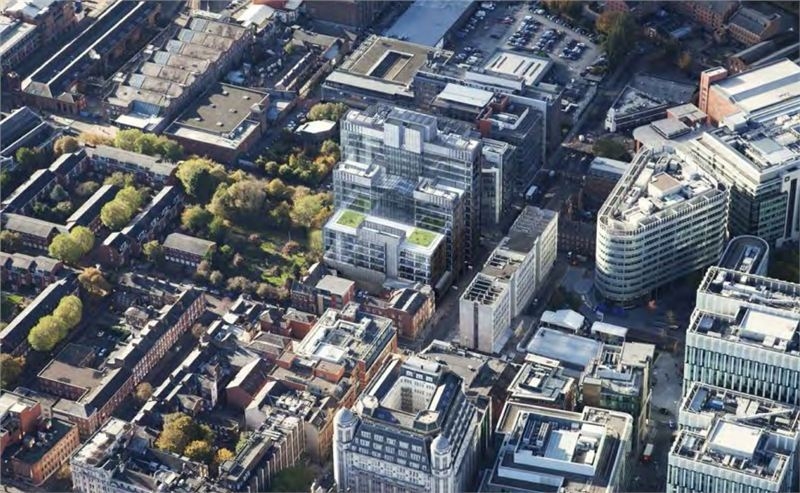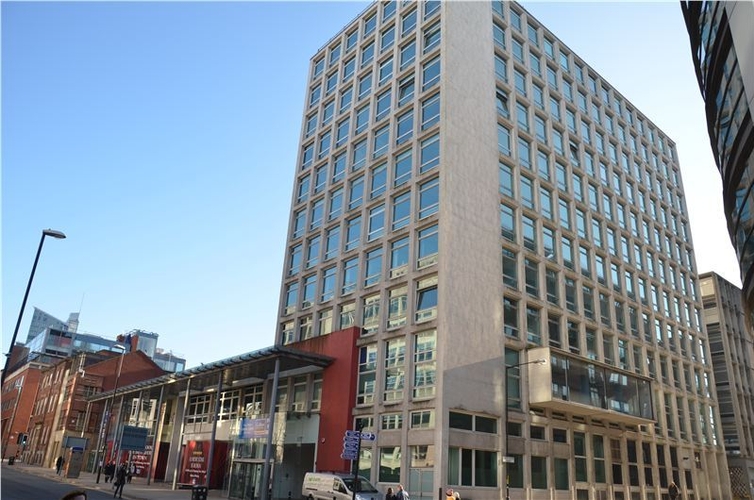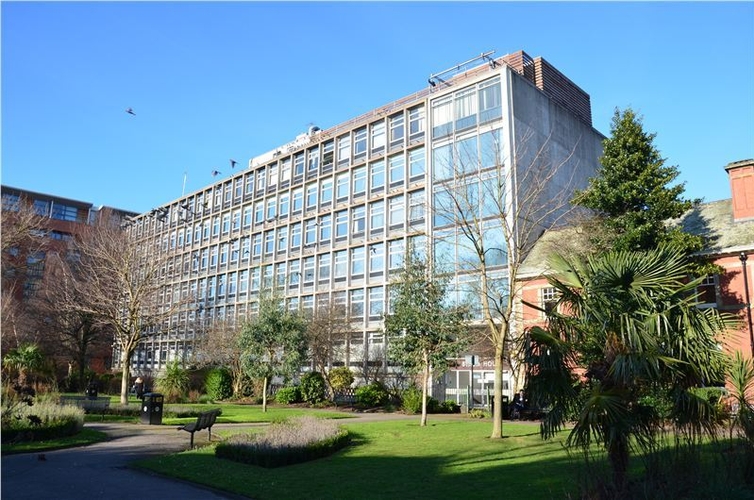Developer will for now retain the once doomed sixties office blocks bordering Spinningfields and St John’s
We had expected something punching for the sky from Allied London. After all, they do have form.
Over the road, work to finish their 24-storey No.1 Spinningfields tower draws to a close, while plans to construct Manchester’s tallest skyscraper (213 metres) as part of the nearby five-tower Trinity Islands development were given the go-ahead last week. And just at the top of Quay Street, the 51-storey St John’s Place, which gained approval last year, and beside them the twin 36-storey PRS towers, Nickel and Dime, which also have the green light.
Allied London boss Mike Ingall had even previously publicised his intention to go high here, on the site of Astley & Byrom House, cheekily tweeting alternative designs for the plot late in 2015 (cheeky because they didn’t yet own the buildings).
Some eighteen months later and Allied have finally secured the unsightly sixties office blocks (pictured above), calling time on a widely unpopular scheme from the West Midlands Pension Fund which threatened to mar Ingall's long-term vision for this corner of the city.
However, news from the developer is that, for now, they have parked their lofty ambitions and will instead retain and repurpose Astley & Byrom House as part of Enterprise City - a cluster of workspaces for the tech and creative industries within the wider St John’s neighbourhood.
In a statement, Ingall said that although the site offered a 'great development opportunity', it would require time and 'careful consideration'.

Here's Ingall's statement in full:
“The launch of Enterprise City has been hugely successful – so much so that we need to expand both the size and range of the offer. Our ambition is to have over 10,000 people working here in three years’ time. Astley & Byrom House makes a great addition for Enterprise City, as many new tech-enabled companies are being inspired by the brand of the place we are creating and are looking to be a part of what is going to become Manchester’s creative, tech and digital cluster.
“In the short to medium term we will be adopting a creative and positive approach to our new acquisition whilst enhancing the use of the building for modern day requirements. Longer term, the site offers a great development opportunity, but the timing and type of any speculative redevelopment needs to be judged with careful consideration.
“Our priority is to bring a commercially attractive collection of buildings back to life, and we have some great ideas for how to do that. I have no doubt they will prove popular to the new industries wanting to locate in Enterprise City.”
So, for the time being, a much-needed renovation job at Astley & Byrom House. Though Confidential strongly expects, in the long-term, Mr Ingall has something else up his sleeve.

St John's Gardens:
The interconnected Astley & Byrom House back onto St John's Gardens - here's its backstory...
These were formerly the site of St John’s church, finished in 1769 and demolished in 1931. The cross says that this small site contains the remains of 22,000 people, new research places the figure at an extraordinary 24,113.
The dead includes curious characters such as 67-year-old Thomas Raspo of Withington, a Frenchman, buried on 23 January 1824 who was ‘clever enough to keep a wife and a concubine in the same house’.
More significant is the grave of John Owen who died in 1846 and left £96,654 for the founding of a non-denominational university. This opened in 1851 and was the ancestor of University of Manchester.
Only Owen’s gravestone (and that of his father) remain. Even William Marsden who campaigned for the half-day holiday on a Saturday and gave working people respite in the 1840s from endless drudgery has lost his monument, although he’s mentioned on the memorial cross.
Nearby the bollards at St John's Passage feature two real cannon barrels sticking out of the pavement. They mark the area where in 1745 Charles Edward Stuart practised with his artillery on his abortive attempt to wrest the throne from the Hanoverians and return it to the Stuart kings. Artillery Street is opposite, over Byrom Street.
















